Walsingham
Up to 1834
A parliamentary report of 1803 recorded the use of workhouses by the parishes of East, North and North Basham [Barsham]; Fakenham Lancaster; Helboughton; Holkham; Houghton East, South and West Rainham; St Giles-in-the-Hole; Little Walsingham; Warham; Wells, and Wighton.
By 1818, the parishes of Holkham, Wightham and Warham had united united Gilbert's Act.
Little Walsingham's workhouse was a small building on the High Street. Wells-next-the-Sea had a workhouse on Parsonage Street which in 1793 had 43inmates.
After 1834
Walsingham Poor Law Union was formed on 12th April 1836. Its operation was overseen by an elected Board of Guardians, 53 in number, representing its 50 constituent parishes as listed below (figures in brackets indicate numbers of Guardians if more than one):
County of Norfolk:
Bale or Baithley, Barney, East Barsham, North Barsham, West Barsham, Binham, Blakeney, Briningham, Cockthorpe, Dunton cum Doughton, Egmere, Fakenham and Alethorpe (2), Field Dalling, Fulmodeston cum Croxton, Gunthorpe, Helhoughton, Hempton, Hindringham, Holkham, Houghton St Giles-in-the-Hole, Kettlestone, Langham, Morston, Pensthorpe, Pudding Norton, East Raynham, West Raynham, Great Ryburgh, Little Ryburgh, Saxlingham, Sculthorpe, Sharrington, Shereford, Great Snoring, Little Snoring, South Raynham, Stibbard, Stiffkey, Swanton Novers, Tatterford, Tattersett, Testerton, Thursford, Toftrees, Great Walsingham, Little Walsingham, Warham All Saints and Mary, Wells-next-the-Sea (3), Wighton, Wiveton.
Later Additions: Brinton (from 1869), Melton Constable (from 1869), Quarles (from 1858) .
The population falling within the union at the 1831 census had been 20,866 with parishes ranging in size from Pudding Norton (population 17) to Wells-next-the-Sea (3,624). The average annual poor-rate expenditure for the period 1833-35 had been £21,497 or £1.0s.7d. per head of the population.
A new Walsingham Union workhouse was erected in 1836 at Great Snoring. The Poor Law Commissioners authorised an expenditure of £5,900 on construction of the building which was intended to accommodate up to 250 inmates. It designed by William Thorold who was also the architect of workhouses for the Depwade, Thetford, and Guiltcross Unions. His design for Walsingham was based on Sampson Kempthorne's model cruciform plan published by the Poor Law Commissioners in 1835. However, the outer buildings at Walsingham gave the workhouse an octagonal rather than the more usual square perimeter. It had a entrance range at the east which contained the porter's lodge, board-room, offices and so on. To the rear, radiating from the central supervisory hub, were four accommodation wings for the various classes of inmate (male/female, old/able-bodied etc.). The areas between the wings were divided in segregated exercise yards. Service and workshop buildings formed the octagonal perimeter of the workhouse. A chapel was situated to the east of the main building. The site location and layout are shown on the 1906 map below.
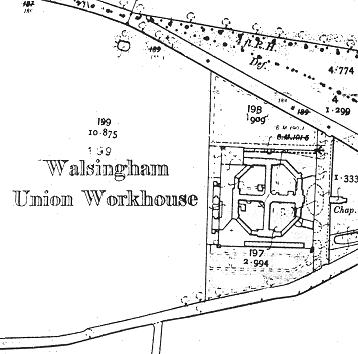
Walsingham workhouse site, 1906
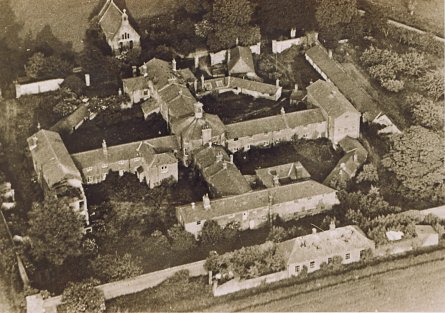
Walsingham aerial view from the north-west, c.1961.
© Estate of the late Kenneth Faircloth.
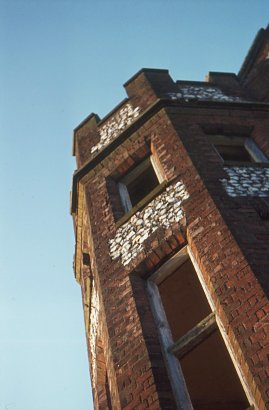
Walsingham central hub, 1978.
© Dave Bicker.
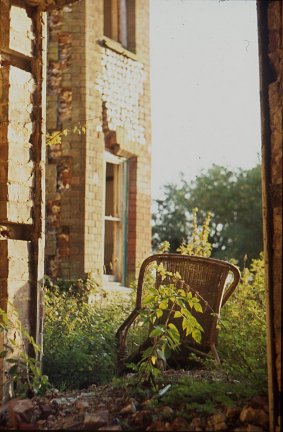
Walsingham, 1978.
© Dave Bicker.
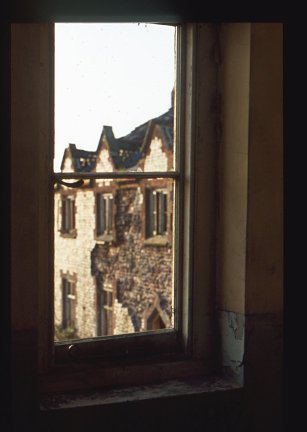
Walsingham, 1978.
© Dave Bicker.
A stone at the south-east entrance to the site bears the name "Thursford Castle" by which the institution became known.
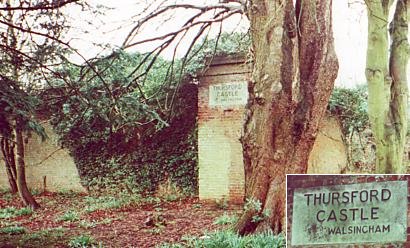
Walsingham entrance from the south-east, 2000.
© Peter Higginbotham.
In the 1930s, after the closure of the workhouse, the buildings were taken over as a smallpox hospital. The Civil Defence used the premises in the 1950s then, in 1961, planning approval was given for conversion to 35 flats but this never took place. The buildings have now demolished and now (2000) just a few overgrown walls remain.
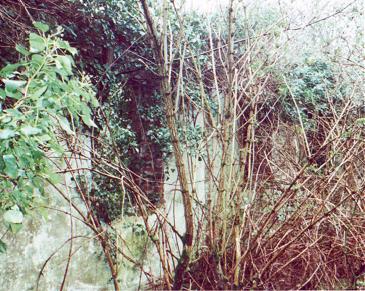
Walsingham, 2000.
© Peter Higginbotham.
The largest surviving structure is the workhouse chapel.
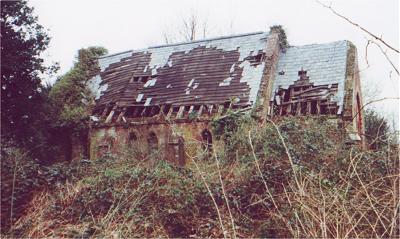
Walsingham, 2000.
© Peter Higginbotham.
Items used in workhouses were often marked in order to discourage their theft. An interesting example of this is a bottle with "Walsingham Union" moulded into it, discovered in a "dig" in Norfolk. The picture below was kindly contributed by Jason Beck.
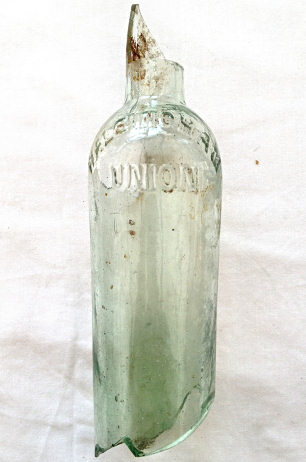
Walsingham Union bottle.
© Jason Beck.
Staff
Inmates
Children's Home
The Walsingham Union operated a children's cottage home at Red House, Holt Road, Little Snoring. In 1924, it could accommodate 15 children who were in the care of the superintendent Miss L. Ward. The property is now a private residence.
Records
Note: many repositories impose a closure period of up to 100 years for records identifying individuals. Before travelling a long distance, always check that the records you want to consult will be available.
- Norfolk Record Office, The Archive Centre, Martineau Lane, Norwich NR1 2DQ. Few records survive. Holdings include: Guardians' minute books (1836-1930, with gaps); Admissions and discharges (1915-27); Register of lunatics in asylum (1909-36); etc.
Bibliography
Links
- None.
Unless otherwise indicated, this page () is copyright Peter Higginbotham. Contents may not be reproduced without permission.


